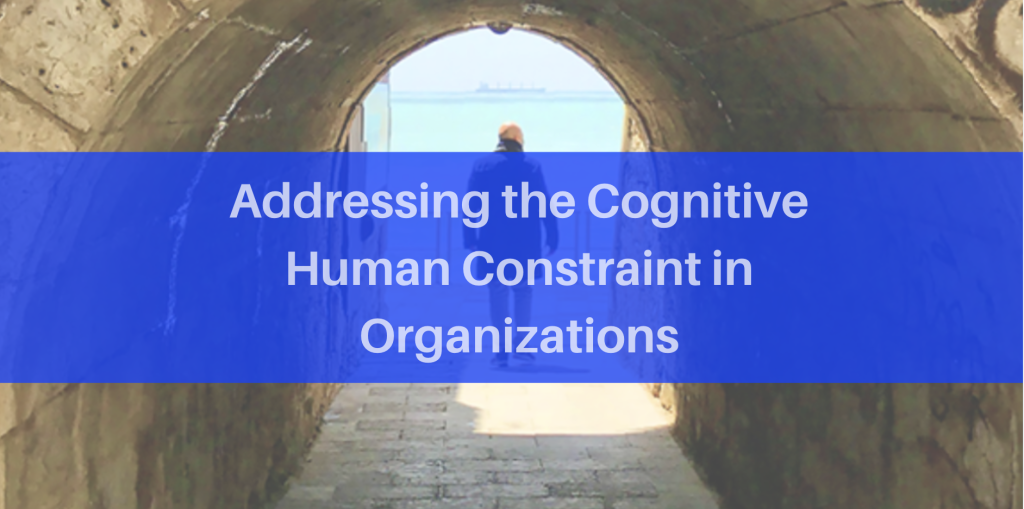
Co-founder Dr. Angela Montgomery, author of ‘The Human Constraint’ business novel, was invited to give a mini-symposium to the International Society for Systems Science. Today’s blog post is a condensed summary of that 42-minute talk. You can watch the presentation here:
Our journey started off in Milan in 1996 and has taken us through to New York, Vancouver Island and now Ottawa where we are based. We started our firm in a business incubator in Milan for innovative companies because we were bringing an innovative approach to management. Milan is in the Lombardy region that is off the charts for density of businesses and entrepreneurial spirit. This was the perfect environment to rigorously formulate and test in a very wide range of sectors what a systemic approach to management could look like and how it could work. For 10 years, with a team that included physicists mathematicians, engineers and philosophers we worked on a systemic methodology for management to enable organizations to operate as cohesive systems. We became probably the first ever Italian consulting firm to help a failing American multinational achieve a complete turnaround and regain profitability. The excellent results of this work led us to relocate to North America for a very ambitious project, acquiring companies and managing them with this systemic methodology. The timing coincided with the greatest, global economic financial crash and the project came to an end. We decided to relocate to Canada to bring our management methodology to a new audience and we are now based in Ottawa, in North America but close enough to Europe.
A new kind of science for management
It’s hard to think of a word to describe what Intelligent Management does. The work we do is highly rigorous academically but we are not academics. We can call it management consulting, advisory work, coaching, teaching and mentoring. It certainly contains all of these aspects but it unifies them into a unified activity, supporting companies on their journey to overcome silos and start to think, behave and operate as one, cohesive system. It’s about delivering a new kind of science for management.
The problem most companies face
Still today in 2024, the majority of companies think in Newtonian terms. In other words, it’s a worldview where interactions are predictable. This linear thinking creates organizations that are top down and siloed. Silos and artificial barriers prevent companies from focusing on what matters most today: speed of flow. Fragmented, siloed organizations suffer from a highly suboptimal use of all available resources, fire-fighting and whack-a-mole actions.
Instead, what is crucial today is to understand and manage complexity in its scientific sense: we live in a world of unprecedented interdependencies where we are all interconnected through a network of conversations. This awareness is lacking in many leaders and in most Business School programs.
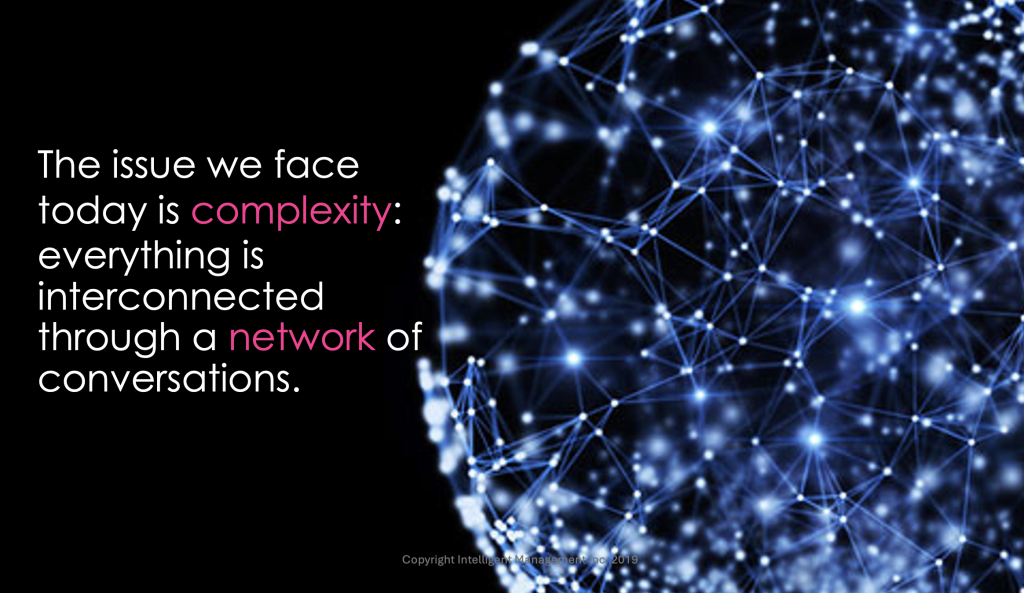
How can organizations function more effectively in complexity? To find an answer, we can frame it as a conflict. The two opposing positions exist because they are protecting two legitimate needs with a common goal. What keeps the conflict alive are the assumptions surrounding it. If we can invalidate certain key assumptions then we can develop a breakthrough solution.
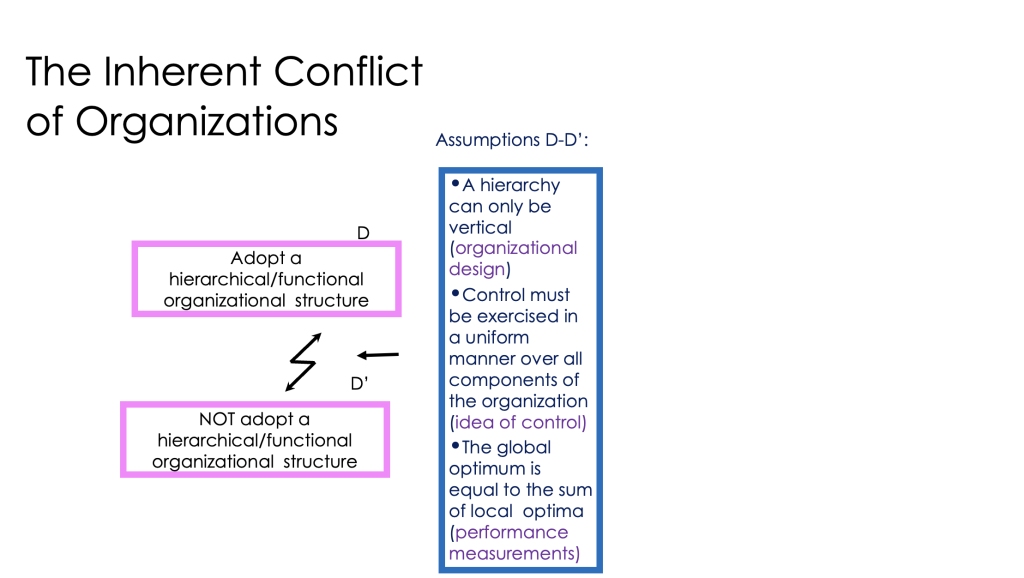
The solution we developed at Intelligent Management comes from standing on the shoulders of two giants of management thinking: Dr. W. Edwards Deming and Dr. Eliyahu Goldratt. Thanks to Dr. Deming, we understand that every organization is a system, a network of interdependent components that work together to achieve a goal. Thanks to Dr. Goldratt, we know that every system has a constraint, and when we strategically choose a constraint, we can design all the activities of the organization around it. This creates high focus and faster flow of communication, information and cash generation. Steeped in these two bodies of knowledge, we were able to develop the solution, valid for any sector, of the organization as a system, designed around a constraint.
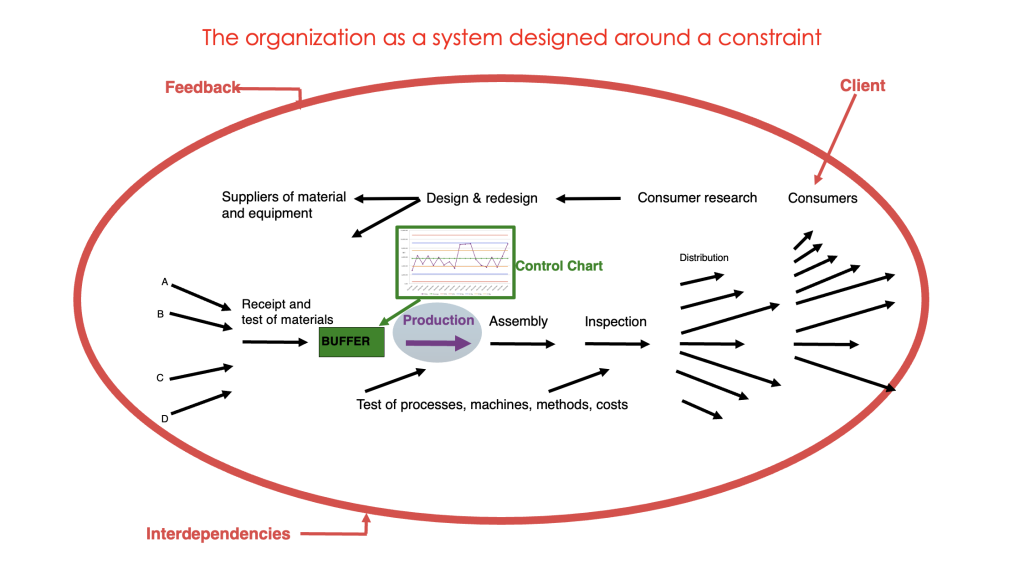
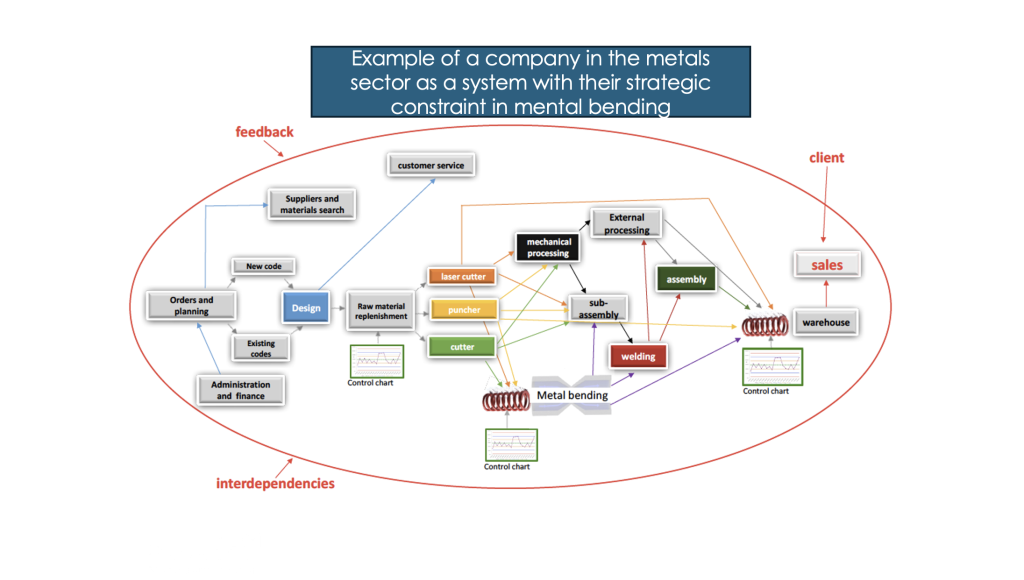
The Human Constraint
Since 1996, whether working with a steel foundry, software house or a medical research centre, we kept bumping into the same phenomenon. We came to call it the cognitive constraint, or human constraint.
The cognitive constraint determines the pace with which individuals, organizations and entire sectors perceive the need for, and accept, change.
How can we design and embrace change operationally? The Theory of Constraints provides a linguistic framework that facilitates our understanding and use of speech acts (how we speak) to reveal limiting mental models that create physical and emotional situations of blockage, both in individuals and organizations. For this purpose, it includes Thinking Processes to support the process of individual and organizational change necessary to overcome the situation of blockage. In a semi-empirical manner, the Theory of Constraints defines six different levels of resistance to change that we must overcome in order to make operational a desired change.
The Thinking Processes are the hard core of the Theory of Constraints. We can never forget that any technical solution developed by Dr. Goldratt to manage production, projects, sales, supply chain etc. stems from the invalidation of limiting assumptions. This was all achieved through words, through language.

The paradox of the human constraint
The paradoxical nature of a constraint is that it constrains or limits us, but we can use that very limitation to unleash potential we would otherwise not access. This is why at Intelligent Management, after 25+ years of in-the-field application, we now have programs so organizations can embed Continuous Innovation, Conflict Resolution and Problem Solving Into Daily Practice. Let’s not leave our potential untapped. For information on these programs please write to us at: intelligentmanagement@sechel.ws
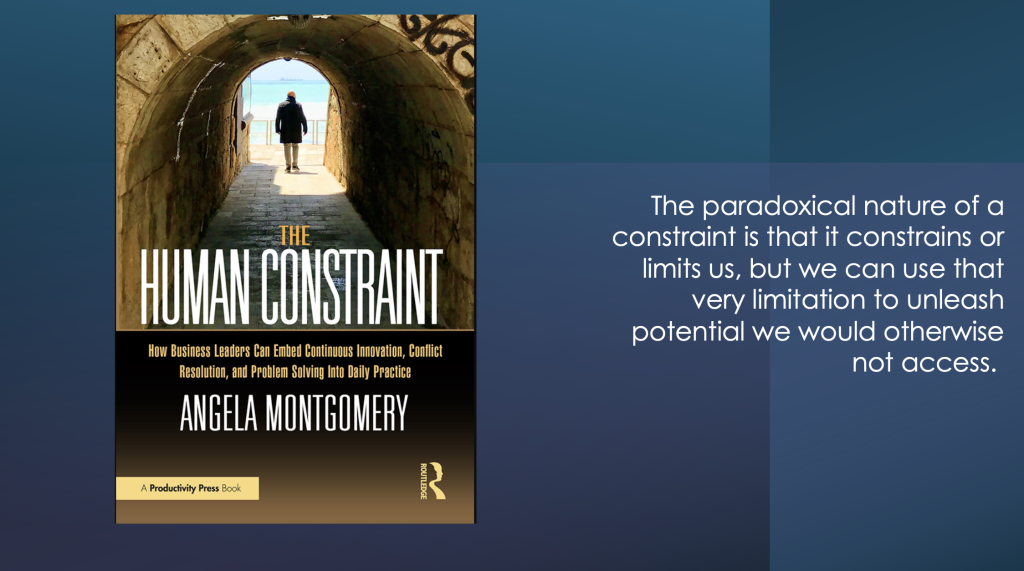
The Thinking Processes feature in the new business novel ‘The Human Constraint: How Business Leaders Can Embed Continuous Innovation, Conflict Resolution and Problem Solving Into Daily Practice ’, Routledge, 2024. Also available on AMAZON
To find out more about ten guided steps to a systemic leap ahead for your company, contact Angela Montgomery at: intelligentmanagement@sechel.ws
SCHEDULE AN INTRODUCTORY CALL WITH US

Intelligent Management works with decision makers with the authority and responsibility to make meaningful change to optimize your company for the digital age. We have helped dozens of organizations to adopt a systemic approach to manage complexity and radically improve performance and growth for over 25 years through our Decalogue management methodology. The Network of Projects organization design we developed is supported by our Ess3ntial software for multi-project finite scheduling based on the Critical Chain algorithm.
See our latest books: The Human Constraint from Routledge; From Silos to Networks: A New Kind of Science for Management from Springer; Moving the Chains: An Operational Solution for Embracing Complexity in the Digital Age by our Founder Dr. Domenico Lepore, and ‘Quality, Involvement, Flow: The Systemic Organization’ from CRC Press, New York by Dr. Domenico Lepore, Dr. Angela Montgomery and Dr. Giovanni Siepe.





Leave a Reply